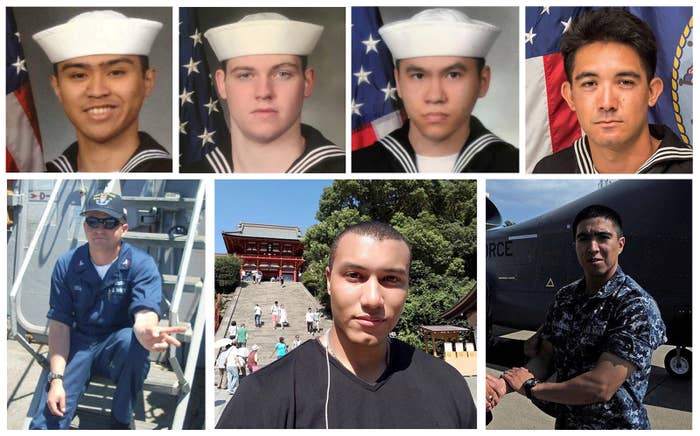
The back-to-back collisions of two US Navy warships with commercial vessels this summer, which killed 17 US sailors, were the result of a series of preventable errors by those on board, according to a Navy investigation released on Wednesday.
The crews failed to follow navigation and basic naval safety procedures, the report says.
"Both of these accidents were preventable, and the respective investigations found multiple failures by watch standers that contributed to the incidents,” said Adm. John Richardson, the US Navy’s chief of naval operations. "We must do better."
The two collisions followed two previous incidents in Asian waters this year. The 17 deaths were greater that the 12 US military members killed so far this year in Afghanistan.
The USS Fitzgerald, a guided missile destroyer, was rammed by a Philippine merchant vessel on June 17 off the coast of Japan. The bodies of seven US sailors were recovered in flooded berthing compartments a day later. Three more sailors were injured, including Cmdr. Bryce Benson, the ship’s commanding officer. Sailors had to use a sledgehammer to break through the door into Benson’s cabin, where he'd been sleeping, and found him “hanging from the side of the ship,” the report says.
Two months later, on Aug. 21, the USS John S. McCain collided with an oil tanker in waters east of Singapore, along one of the world’s most congested shipping routes. Divers recovered the bodies of 10 sailors in the days after the accident.
The investigation found that the Fitzgerald’s watch teams “disregarded established norms of basic contact management and, more importantly, leadership failed to adhere to well-established protocols put in place to prevent collisions.” Crew members mistakenly calculated that the other ship would pass them from a 1,500- yard distance and did not slow their speed, failing to correct course until it was too late.

The report also says the Fitzgerald “failed to notify other ships of danger” as required by Navy regulations.
In August, the Navy relieved three of the Fitzgerald’s senior officers, including its captain, for mistakes that led to the accident. The commander of the US Seventh Fleet, Vice Adm. Joseph Aucoin, also was relieved of his post “due to a loss of confidence in his ability to command" after the incidents, the Navy said.
"The collision was avoidable and both ships demonstrated poor seamanship," the Seventh Fleet said at the time. "Within Fitzgerald, flawed watch stander teamwork and inadequate leadership contributed to the collision."
As for the USS John S. McCain, the crew’s “complacency, over-confidence and lack of procedural compliance” led to lax standards and errors, the report says.
The Navy also concluded that "no one on the bridge watch team, to include the commanding officer and executive officer, were properly trained on how to correctly operate the ship control console during a steering casualty."
Expired training certifications for the Navy's 11 ships based in Japan have shot up from 7% in January 2015 to 37% in June, according to September testimony from the Government Accountability Office.
A major factor that led to the collision was "sub-standard level of knowledge regarding the operation of the ship control console, especially knowledge of the ship’s steering system ahead of the collision," according to the report.
There was also a series of miscommunications. In one case, the ship’s commanding officer noticed that the helmsman was having difficulty steering while also adjusting the vessel’s throttles for speed control. He ordered that these duties be split with another watchstander, but his order was misunderstood.
“This unplanned shift caused confusion in the watch team" and the crew lost “situational awareness” ahead of the crash, the report says.
The deadly collisions followed two other incidents earlier this year. In May, a small fishing boat hit the guided-missile cruiser USS Lake Champlain near the Korean Peninsula. And in January, another guided-missile cruiser, the USS Antietam, ran aground while trying to anchor in Tokyo Bay.
After the fourth accident, the Navy announced a rare pause in its operations to allow its fleet commanders, sailors and other officials to assess safety measures.
Since the collisions, and subsequent hearings and probes into what went wrong, the Navy has said it's making sweeping changes. For one, it will for the first time impose formal rest guidelines for sailors on ships. A 2015 Rand Corporation study found that military personnel's "high prevalence of insufficient sleep duration, poor sleep quality, daytime sleepiness, fatigue, and nightmares” was especially dire in the US Navy.
"We are a Navy that learns from mistakes and the Navy is firmly committed to doing everything possible to prevent an accident like this from happening again," Richardson, the chief of naval operations, said in a statement on Wednesday. "We must never allow an accident like this to take the lives of such magnificent young Sailors and inflict such painful grief on their families and the nation."
